One of the things that most attracts the attention of a curious person when visiting the interior of a pyramid (and that extends to Egyptian architecture in general) is that its walls are usually almost completely covered with hieroglyphics.
It is not a question of decoration per se, but rather a wide range of magical formulas, spells and prayers designed to help the deceased to cross the underworld and reach eternal life in the afterlife. They constituted the most important set of texts of the Old Kingdom and today they are known by the name of Texts of the Pyramids .
They do not constitute an ordered corpus because, in fact, they were not written by the same hand nor were their seven hundred and fifty-nine formulas made at the same time. The oldest reference corresponds to the pyramid of Unas, the last pharaoh of the V dynasty, when - experts believe - the texts existed on papyrus and were copied on the walls and ceilings of his tomb:two hundred and twenty-eight spells. As more were discovered, the number increased by several hundred, as we said, the compiler being the English Egyptologist and philologist Raymond Oliver Faulkner.
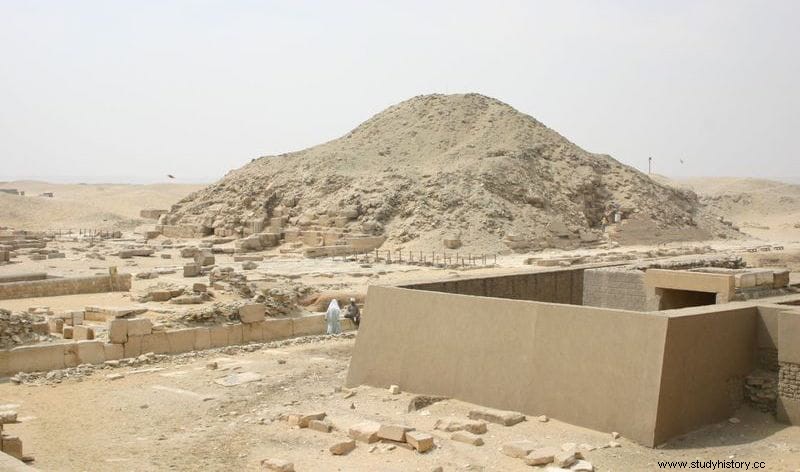
Faulkner, whose specialty was Egyptian philology (he was a professor of it and even made a dictionary of Middle Egyptian), published his anthology in 1969 under the title The Ancient Egyptian Pyramid Texts . But it was not he who discovered them but Gaston Maspero, director of the French Institute of Oriental Archeology who in 1881, under the orders of Auguste Mariette, carried out his first excavation in Sakkara based on a previous work by the German Karl Richard Lepsius, finding the pyramid of Pepi I. Its interior turned out to be covered with hieroglyphs painted in blue.
Shortly after he unearthed a second pyramid, that of Merenre I (son of the former), which had the same hieroglyphs. Subsequently, Maspero continued to bring to light more pyramids, those of Teti, Pepi II and the aforementioned Unas. This allowed him to publish in 1894 the first compilations of texts, which he titled Les inscriptions des pyramides de Saqqarah , which were later translated into other languages; for example the German in 1910, the work of the Egyptologist Kurt Heinrich Sethe, whose version is considered the most faithful.

Of course, Maspero was not the only one who contributed discoveries. Egyptology became a worldwide obsession in the first quarter of the century after Howard Carter and Lord Carnavon unearthed the wonders of Tutankhamun's tomb in 1922.
Gustave Jéquier excavated the pyramids of Neith, Iput II and Wedjebetni, the wives of Pepi II, as well as that of a little-known pharaoh of the 8th dynasty, Kakaura Ibi, publishing the texts they contained. In total, texts have been found in the pyramids of eleven real characters, since not all of them have them.
In general, the texts in these tombs should be read from the inside out, starting with the burial chamber, since it was there that the deceased was supposed to rise again, leaving the sarcophagus to go outside and leave the underworld.
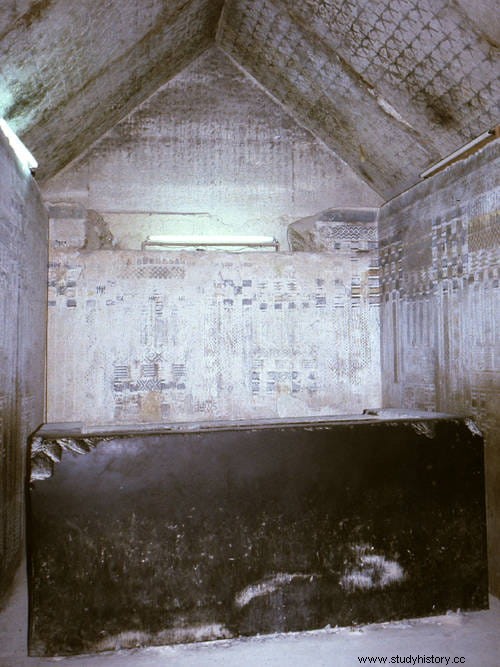
However, those of the tomb of Pepi I make the opposite route, as a kind of funerary procession from the vestibule (metaphor of the valley temple, where the coffin was received), passing through the corridor (road that led to the high temple) , the antechamber (the aforementioned high temple) and finally the chamber (exclusive inner sanctum for the pharaoh and the high priest).
In the aforementioned pyramid of Unas, which is the smallest in the Old Kingdom, two hundred and twenty-eight blue hieroglyphs cover all the interior walls with three exceptions:those in the lower part of the burial chamber, which are made of alabaster and are painted imitating cane mats; that of the sarcophagus, in which the royal palace is represented in black and green, and the ceiling, painted blue and full of stars. Curiously, the basalt sarcophagus has no inscriptions, not even the name of the pharaoh (which does not appear on the walls either).
What his texts deal with is varied but can be synthesized into three large thematic groups. The first would be that of offerings, in the case of libation ceremonies, for example, and other variants:“Here the bread flies, the bread continues to fly towards my mansions” . The second would be that of protection spells, some against dangerous animals (which are unequivocally shown with their heads severed) and others to avoid obstacles on the ground:«Oh, king, your mother Nut spreads herself over you to avoid you all evil, to protect you from all evil, and you are the greatest of his children» .
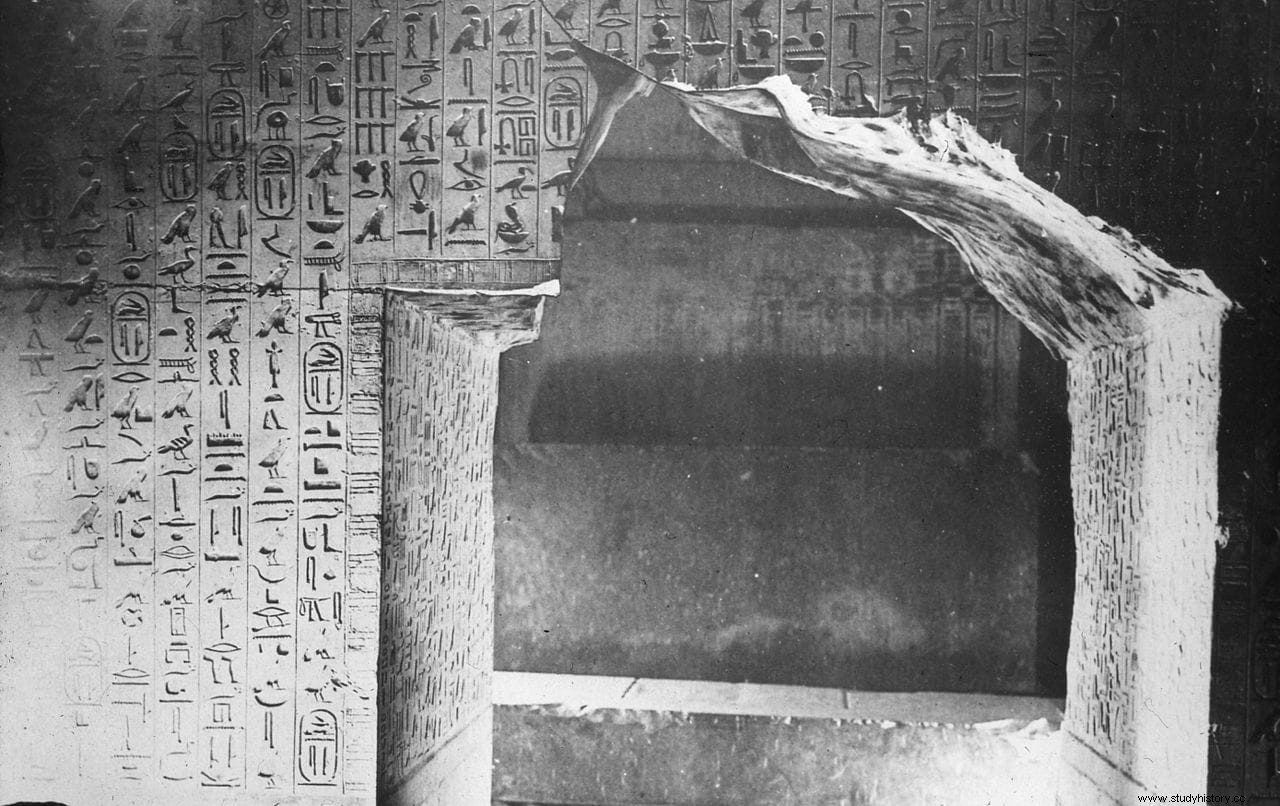
The third group is the funerary ritual (most of what we know about it comes from there) and the ascent to heaven of the deceased, for which it includes religious hymns, spells... Also legends such as the story of the fight between Horus and Seth or cosmogonic fragments referring to Atum.
In all this it is not substantially different from other cases, thus adding ceremonies such as the opening of the mouth and eyes (the Kher-Heb or officiating priest made holes to allow the dead person to speak, hear, see and eat), formulas for transfiguration from earthly to divine, spells to cross the Dat, etc.
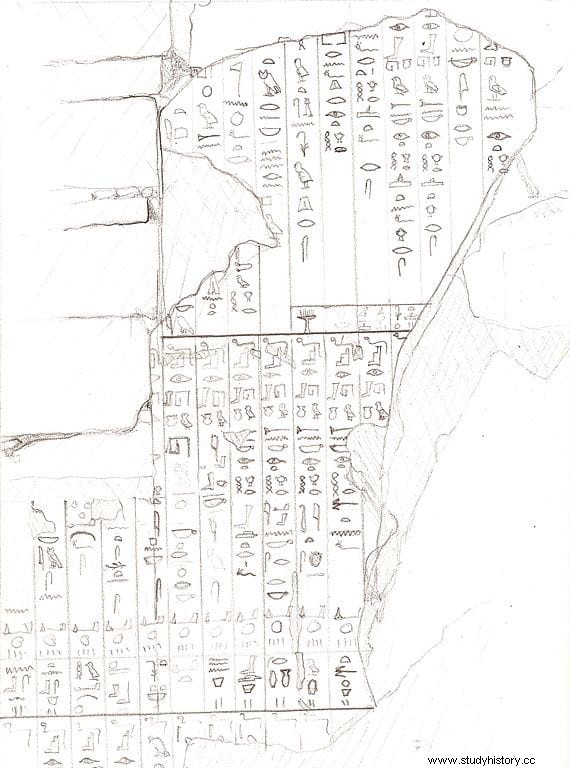
The latter is especially interesting, since it is part of one of the two different theological currents that can be seen in the fragments:that of the solar myths, surely originating in Heliopolis, in which the deceased pharaoh is guided from the Dat, the first heaven -where Horus reigns-, up to the celestial kingdom of Ra (the Dat would later become the Duat, an underworld that hosted the celebration of the judgment of Osiris). One of the texts goes like this: "A ladder is knotted by Ra before Osiris, a ladder is knotted by Horus before his father Osiris when he goes to his spirit" .
The other current is based on an older cosmology, in which this resurrection path is destined for the circumpolar stars, those that seem to revolve around the Polar Star (the one that is at the zenith, over the North Pole). Because they could always be seen in the night sky, every day throughout the year, they were associated with immortality and were called by the Egyptians "those who do not know fatigue" or "those who do not know destruction" (in reality they should be speak rather of constellations and there are six:the Great Bear, the Minor Bear, Cassiopeia, Dragon, Giraffe and Cephe).
The Pyramid Texts They did not follow a specific order, since they were a simple compilation made over time, between the VI and VIII dynasties (or, what is the same, from the XXV century BC, to the XX BC, the fragment being dated oldest around 2400 BC).
However, from then on they continued to be used for the same purpose during the following periods, although by then they had stopped building pyramids in favor of mastabas and hypogea; likewise, they lost the character of exclusivity they had, also opening up to the tombs of officials in the New Kingdom.
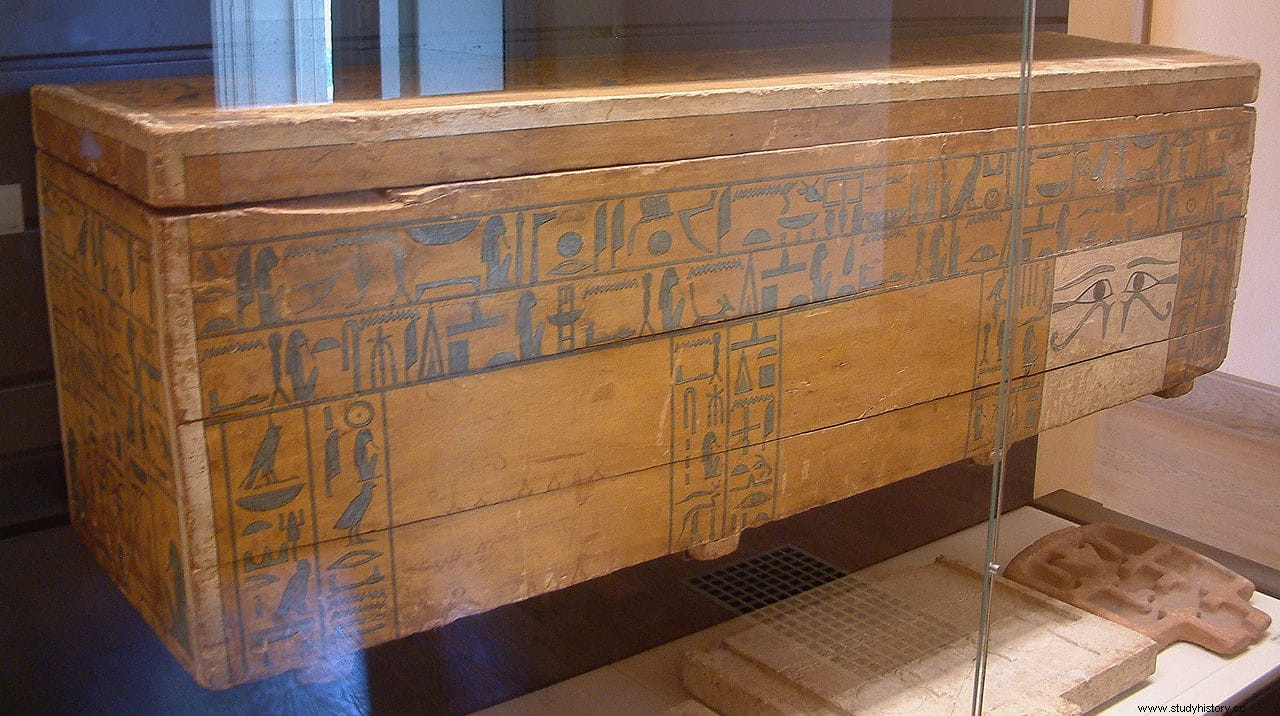
In the First Intermediate Period (2190-2052 BC), which was when the 7th dynasty was established and lasted until the middle of the 11th, the Pyramid Texts served as a model for a new type of funerary writings, the Sarcophagus Texts s, which were placed in the coffins of the nobles recounting their lives or leaving testimony of their work.
In turn, these evolved into a more easily reproducible medium, so that in the New Kingdom the sarcophagi and walls were abandoned in favor of papyri deposited next to the mummy. This gave rise to a third type of text known as the Book of the Dead , all of which favored a "democratization" of immortality determined not so much by lineage as by economic possibilities.
